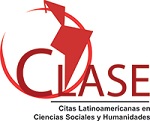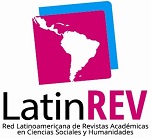The Theme of the Double in Manuel Mejía Valera and José Durand
DOI:
https://doi.org/10.26490/uncp.horizonteciencia.2022.22.1067Keywords:
double, doppelgänger, Generation of the 50s, Manuel Mejía Valera, Jose DurandAbstract
This article will analyze the theme of the double or doppelgänger in two Peruvian narrators of the Generation of the 50s: Manuel Mejía Valera and José Durand. Within the narrative of this generation, a fantastic aspect developed, which was almost ignored by critics until the beginning of this century. One of the recurring topics within this aspect was the topic of the double, which refers to the concepts of identity and otherness, which can be linked to the social changes that were made in that decade. Manuel Mejía Valera and José Durand had a brief narrative production with a certain inclination towards the fantastic and in which the subject of the double was treated in a peculiar way to address the problem of identity and relationship with others.
Downloads
References
Dieguez, S. (2013). Doubles Everywhere: Literary Contributions to the Study of the Bodily Self. En Bogousslavsky, J. y Dieguez, S., Literary Medicine: Brain Disease and Doctors in Novels, Theater, and Film (pp. 77-115). Karger.
Dolezel, L. (2003). Una semántica para la temática: El caso del doble. En Naupert, C. (Ed.), Tematología y comparatismo literario (pp. 257-275). Arco/Libros.
Durand, J. (1987). Desvariante. Fondo de Cultura Económica.
Girard, R. (2005). La violencia y lo sagrado. Anagrama.
Herrero, J. (2011). Figuras y significaciones del mito del doble en la literatura: teorías explicativas. Cédille. Revista de estudios franceses. Monografías 2, 15-48.
Honores, E. (2010). Mundos imposibles. Lo fantástico en la narrativa peruana. Cuerpo de la Metáfora.
Güich, J. (2016). Los meandros fantásticos de José Durand. En Güich, J., López, C. y Susti, A. (Eds.), Del otro lado del espejo. La narrativa fantástica peruana (pp. 105-124). Universidad de Lima Fondo Editorial.
Jourde, P. y Tortonese, P. (2005). Visages du double: Un thème littèraire. Armand Colin.
López, C. (2016). Espejos y descentramientos: la narrativa fantástica de Mejía Valera. En Güich, J., López, C. y Susti, A. (Eds.), Del otro lado del espejo. La narrativa fantástica peruana (pp. 175-189). Universidad de Lima Fondo Editorial.
Mejía, M. (1966). Un cuarto de conversión. Joaquín Mortiz.
Molina, J. (Ed.). (2007). Álter ego. Cuentos de dobles. Siruela.
Webber, A. (1996). The Doppelgänger. Double Visions in German Literature. Clarendon Press Oxford.
Published
Issue
Section
License
Copyright (c) 2021 Nehemías Vega Mendieta

This work is licensed under a Creative Commons Attribution-NonCommercial 4.0 International License.
















